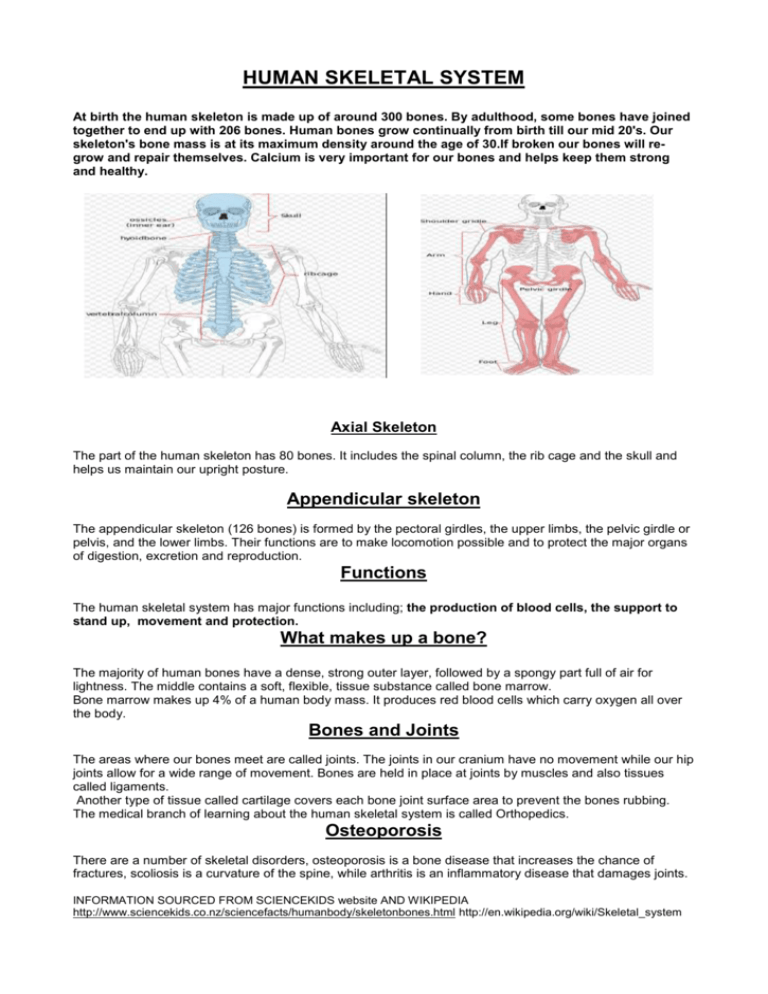Skeletal system word-2
advertisement

HUMAN SKELETAL SYSTEM At birth the human skeleton is made up of around 300 bones. By adulthood, some bones have joined together to end up with 206 bones. Human bones grow continually from birth till our mid 20's. Our skeleton's bone mass is at its maximum density around the age of 30.If broken our bones will regrow and repair themselves. Calcium is very important for our bones and helps keep them strong and healthy. Axial Skeleton The part of the human skeleton has 80 bones. It includes the spinal column, the rib cage and the skull and helps us maintain our upright posture. Appendicular skeleton The appendicular skeleton (126 bones) is formed by the pectoral girdles, the upper limbs, the pelvic girdle or pelvis, and the lower limbs. Their functions are to make locomotion possible and to protect the major organs of digestion, excretion and reproduction. Functions The human skeletal system has major functions including; the production of blood cells, the support to stand up, movement and protection. What makes up a bone? The majority of human bones have a dense, strong outer layer, followed by a spongy part full of air for lightness. The middle contains a soft, flexible, tissue substance called bone marrow. Bone marrow makes up 4% of a human body mass. It produces red blood cells which carry oxygen all over the body. Bones and Joints The areas where our bones meet are called joints. The joints in our cranium have no movement while our hip joints allow for a wide range of movement. Bones are held in place at joints by muscles and also tissues called ligaments. Another type of tissue called cartilage covers each bone joint surface area to prevent the bones rubbing. The medical branch of learning about the human skeletal system is called Orthopedics. Osteoporosis There are a number of skeletal disorders, osteoporosis is a bone disease that increases the chance of fractures, scoliosis is a curvature of the spine, while arthritis is an inflammatory disease that damages joints. INFORMATION SOURCED FROM SCIENCEKIDS website AND WIKIPEDIA http://www.sciencekids.co.nz/sciencefacts/humanbody/skeletonbones.html http://en.wikipedia.org/wiki/Skeletal_system






